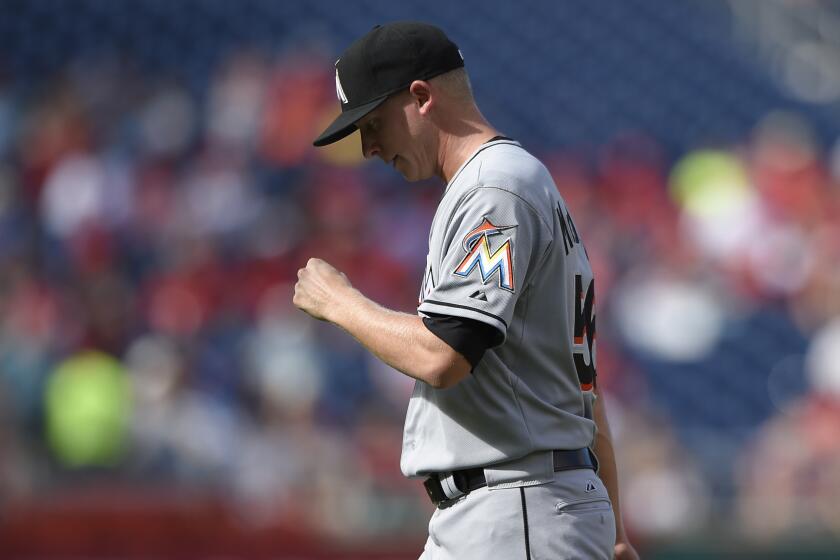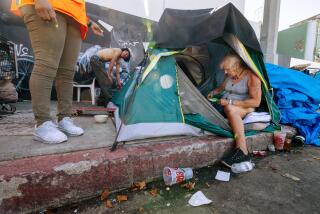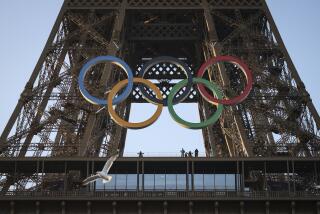Beneath the Olympic flame, some of Tokyo’s most vulnerable stay tucked out of view
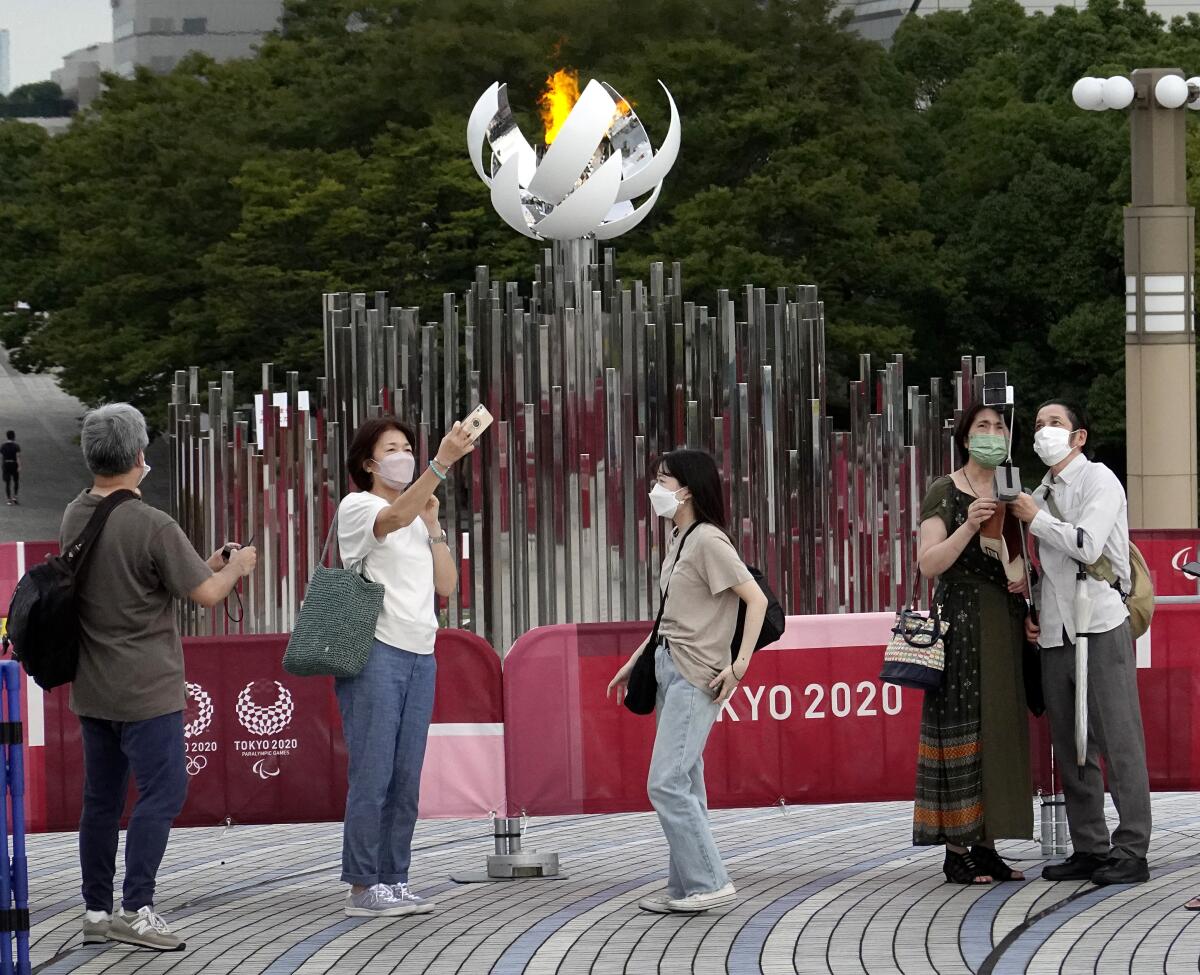
TOKYO — For the last week, the Olympic flame has been burning atop a wide pedestrian bridge on a scenic stretch of the Tokyo Bay waterfront.
Deep into the muggy Tokyo summer night, a steady stream of locals stop to snap photos of the cauldron, one of the rare spots in the Games the Japanese are allowed to enjoy in person. Sweaty Olympic volunteers, ever vigilant against a spreading pandemic, try in vain to usher them along.
Slip away from the crowd and stroll beneath the bridge and you’ll come upon a waif of a man in a dark polo shirt and ball cap. Leaning back on a pile of belongings packed under layers of tarp, he is watching a television drama on his cellphone, oblivious to or unconcerned with what’s happening above.
The soft-spoken 57-year-old homeless man from Chiba prefecture, born the year Tokyo last hosted the Summer Games, was here long before the torch arrived. He was here before nearby Shiokaze Park was cleared of about 10 homeless residents to make way for the beach volleyball court, before the Ariake Gymnastics Center was built to mint new champions and put old ones to the test.
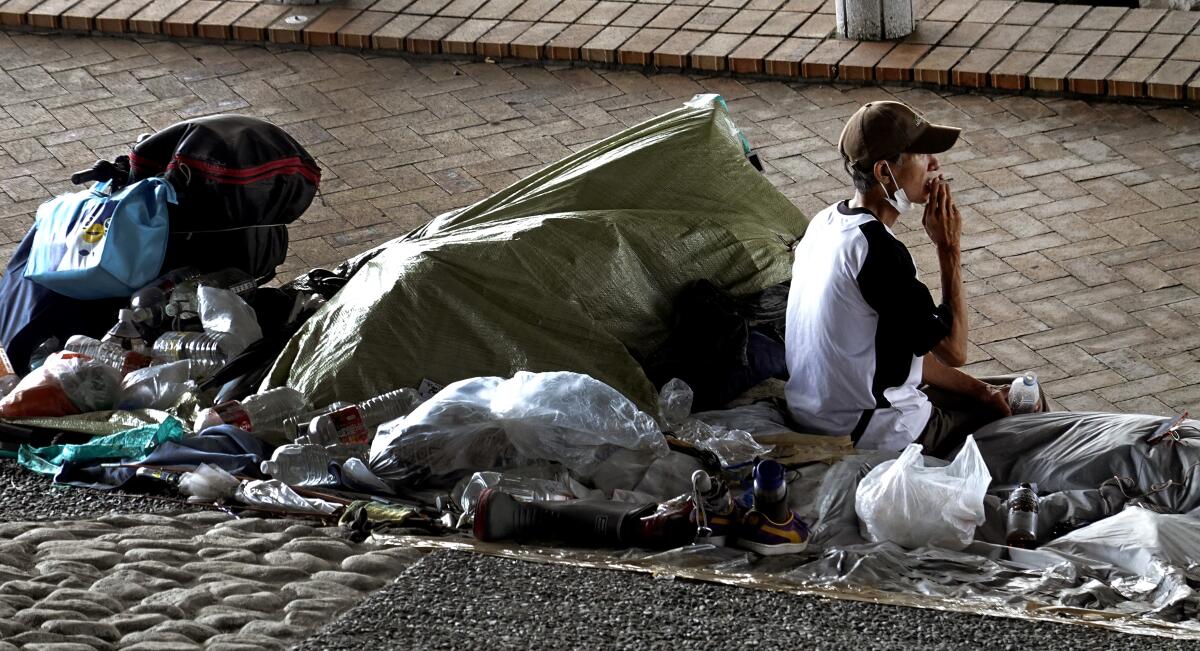
“It’s changed a lot,” said the man, who didn’t want to give his name lest he get on the wrong side of city officials who wanted those like him to stay in the shadows during the Olympics. “Lots of homeless people were chased out of here.”
But the slight man adrift in a small sea of possessions has the grit and endurance of any athlete who aspires to ascend the podium. Once, rising waters from a typhoon almost swept him away. For years, city officials pestered him to move away, the pressures mounting as the Olympics neared, then ebbing after activists intervened on his behalf.
Through it all, he’s stayed put. For 15 years, this humble embankment beneath the Yume no Ohashi — the Bridge of Dreams — has been the only home he’s known.
It’s become as reliable a part of the Olympics as cost overruns and allegations of corruption that the Games displace some of the host city’s most vulnerable residents. Before the world’s top athletes, dignitaries and camera crews descend, a city’s less majestic distractions are swept out of view — as happened in Los Angeles in 1984, Vancouver in 2010, Rio de Janeiro in 2016.
After all, city leaders see the Olympics as a global branding showcase to attract tourists and businesses. It’s a question already reverberating in Los Angeles, as it wrestles with how to help and manage some 66,000 unhoused people in the city and surrounding areas while gearing up to host the Olympics once again in 2028.
The family of U.S. baseball player Scott McGough is in Tokyo, but he still can’t see them. The Olympics make it difficult for families to be together.
Tokyo has been no exception. Those living on the street or in parks had their quarters abruptly fenced off or their belongings seized ahead of the Olympics, homeless people and their advocates say. Normally unnoticed or tolerated, they’ve found themselves at the intersection where compassion collides with image, commerce and national pride.
In late June, homeless individuals were served notices to clear their encampments because the Olympic torch relay was going through the area. A couple of weeks later, another notice appeared saying the relay was canceled — but they still needed to vacate the area because their belongings were a “hindrance,” according to copies of the warning notice provided by groups supporting the homeless.
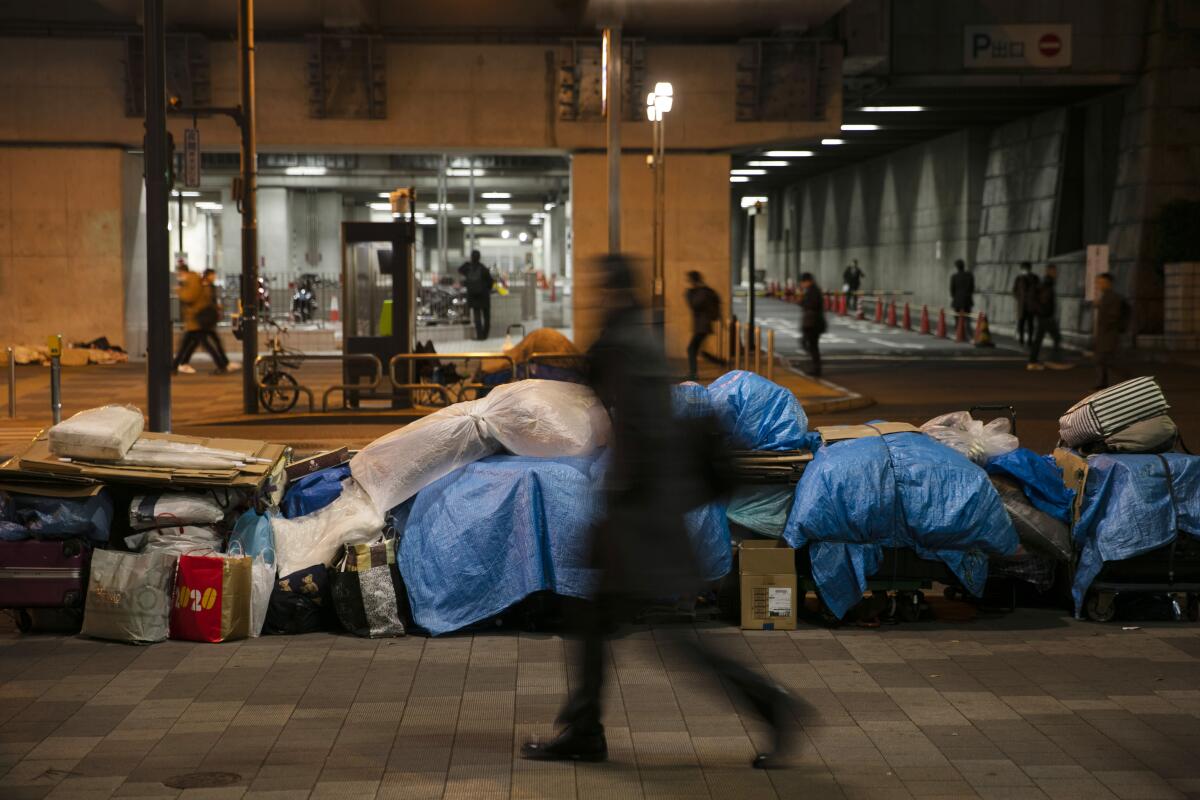
Official figures from Japan’s Ministry of Health, Labor and Welfare put Tokyo’s homeless population last year at just 800. Advocates say that number is a gross underestimation because the tabulations are done during the day, when the homeless population dissipates into the city. They say the real figure is at least two or three times that, and there are also thousands more who spend the night at places like 24-hour internet cafes, just one step from ending up on the street.
“They don’t have any real motivation to solve the problem, but it’s just, hide yourself during the Games,” said Masato Kimura, a sociologist at Toyo University and founding member of the support group Nojiren, who has been working with the homeless population since 1996. “They try to hide the social problems from the surface of the city.”
Kimura said he felt it was important the world see Tokyo for what it is, warts and all, including how it treats the poor and underprivileged, the failures of its welfare system and the lack of public housing.
Many of Tokyo’s homeless are former day laborers who flocked to the city for jobs in the bubble economy of the late 1980s and early 1990s and were unable to get back on their feet after the collapse, Kimura said. Some also suffer from alcohol dependence or psychiatric disorders, researchers have found.
The man living under the Bridge of Dreams said he came to Tokyo as a young man to work for a moving company, living in a dorm provided by his employer. A fire at the company pushed it into bankruptcy, and he was abruptly left without a home.
He found his way to the Ariake waterfront, an area largely composed of reclaimed land far away from the bustle of central Tokyo. Along a canal across from a 377-foot Ferris wheel, he at times fishes for sea bream and bass that he releases back into the water. He likes the atmosphere of the neighborhood, he said, and knows the air-conditioned malls where he can cool down on these hot summer days without being bothered. He can walk to his job at a car wash, about 30 minutes away on foot.
The Olympics, already having disrupted the loose community of unhoused people, have made him nervous about the pandemic, especially with visitors coming from around the world.
In addition to the Olympic venues for beach volleyball, gymnastics, tennis and cycling, also nearby is the main press and broadcast center with thousands of members of the media, a part of the “Olympic bubble” that the Japanese government is attempting to keep separated from the rest of Tokyo’s 14 million residents.
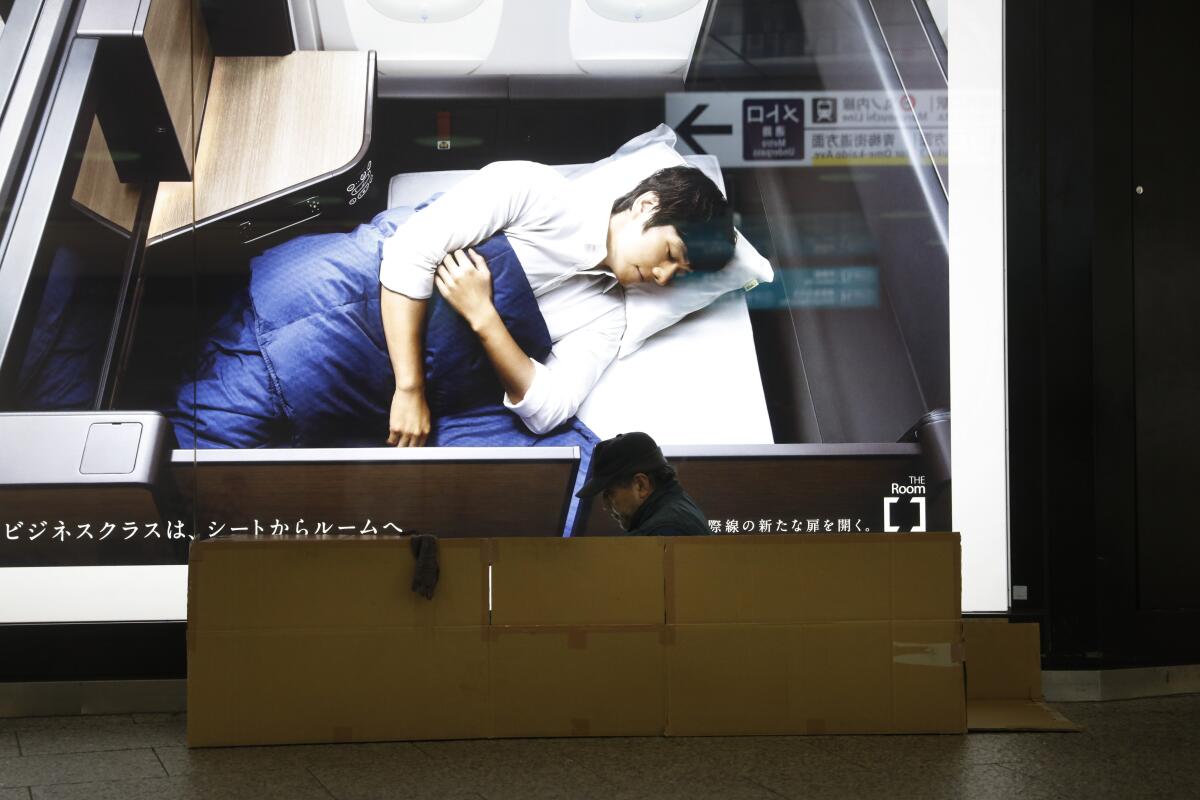
“With COVID, this is the worst Olympics ever,” he said, a sentiment common among housed and unhoused people alike. “I’ve no interest. Better if it didn’t happen.”
He shares the embankment with his neighbor, a man four years his junior with light-colored, short-cropped hair from Saitama prefecture. The neighbor said he’d been forced to move a few times, including one year during the Tokyo Marathon because of heightened security after the 2013 Boston Marathon bombing, before arriving at the spot below the bridge about two years ago.
The younger man arrives on his bicycle, his most prized possession, around 9:30 p.m. to set up camp for the night, his cluster of belongings just a few feet up the slope of the embankment. Chatty and jovial, he expressed admiration that his calm, reserved neighbor had stuck it out all these years under the bridge. Much more disciplined and diligent, the older man is always up earlier than he is in the mornings, he said.
The man from Saitama said he was amused to think of the all-important symbol of the Games directly above their heads.
“Without the torch, there is no Olympics,” he noted wryly. Pointing at the satin-like surface of canal barely stirring in the gentle night breeze, he said: “If I took the water and put it out, the Olympics would be over.”
He isn’t alone in the thought. A 53-year-old woman was arrested in early July after squirting a water gun at the torch as it was being carried through the city of Mito, northeast of Tokyo, yelling, “No Olympics. Stop the Games,” according to local reports.
Tsubasa Yuki, a counseling and support coordinator for Moyai, an organization providing services for the unhoused population, said compared with other countries including the U.S. and the U.K., there was more pressure for the homeless in Japanese society to be unobstructive and invisible. There have been violent attacks on homeless individuals in the past, he said, and many hold jobs for which they keep up appearances.
“It’s becoming harder for them to find a stable place to live,” he said.
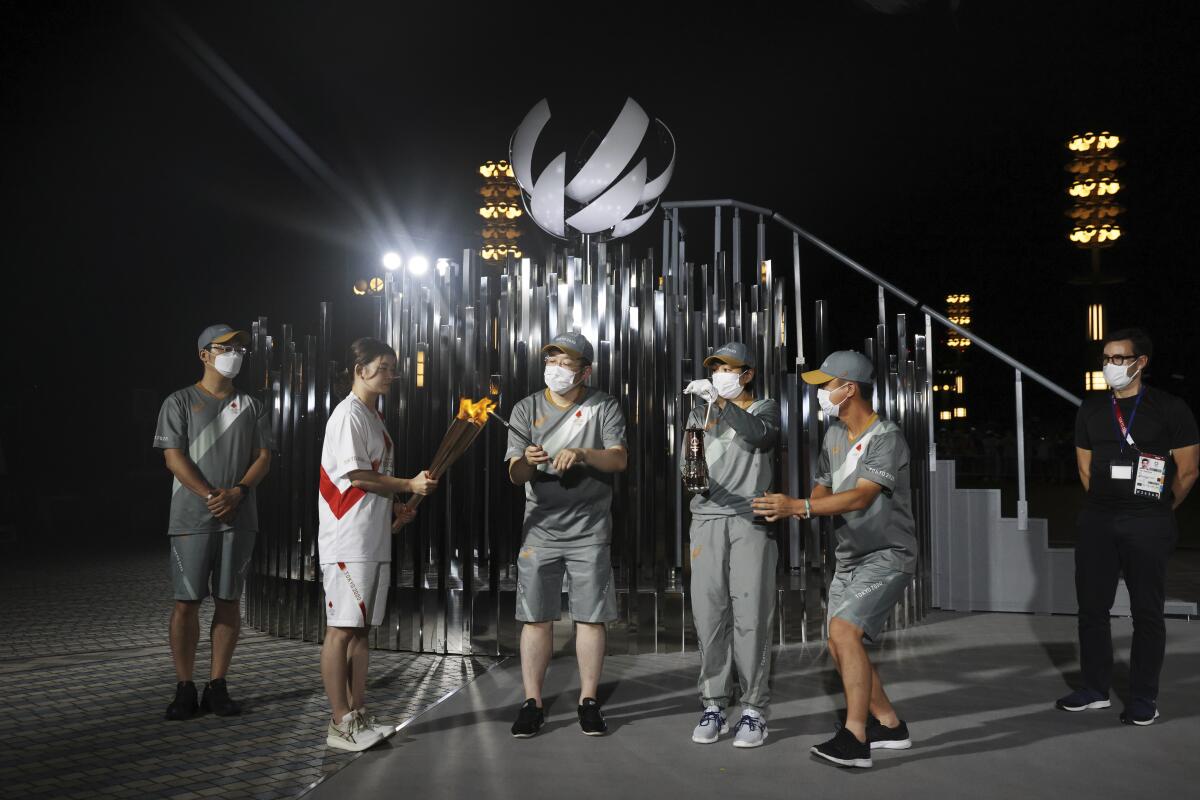
The Olympics, while displacing some of Japan’s poor, have also benefited from their labor, he said.
Some of those who receive food or other support from his group have been working on the Olympics as janitors or security guards, according to Yuki. And some of the elderly homeless people he’s met over the years told him they came to Tokyo to work in the construction boom leading up to the 1964 Olympics.
Back under the bridge, the two men got ready to turn in for the night while overhead, giggly passersby posed for selfies with the flame. With first light, the men will need to disappear once more, going along with the delicate dance these two weeks while the world’s cameras are trained on Tokyo.
This is, after all, their city too.
Kim is a Times staff writer and Lowry is a special correspondent.
More to Read
Sign up for Essential California
The most important California stories and recommendations in your inbox every morning.
You may occasionally receive promotional content from the Los Angeles Times.
